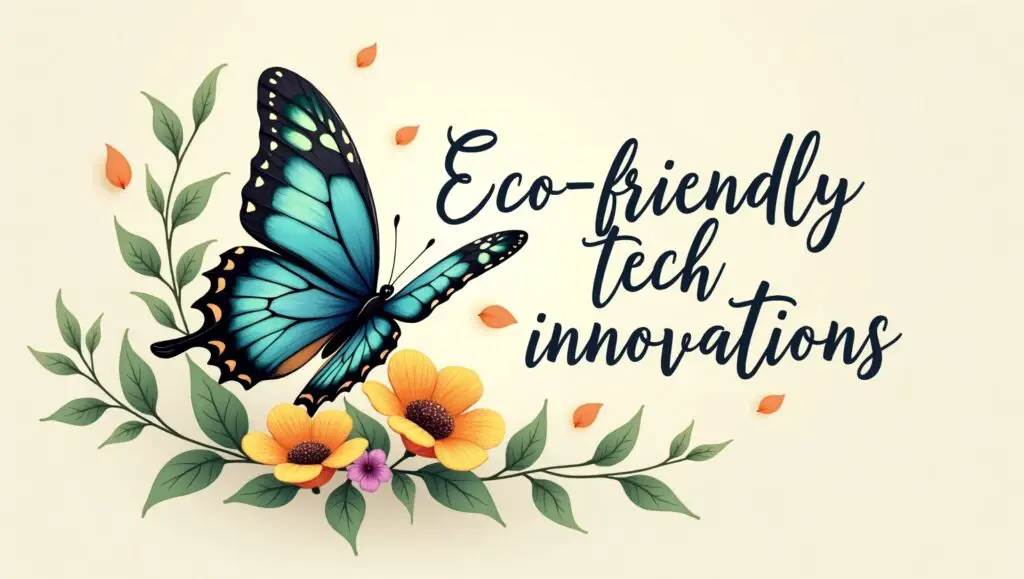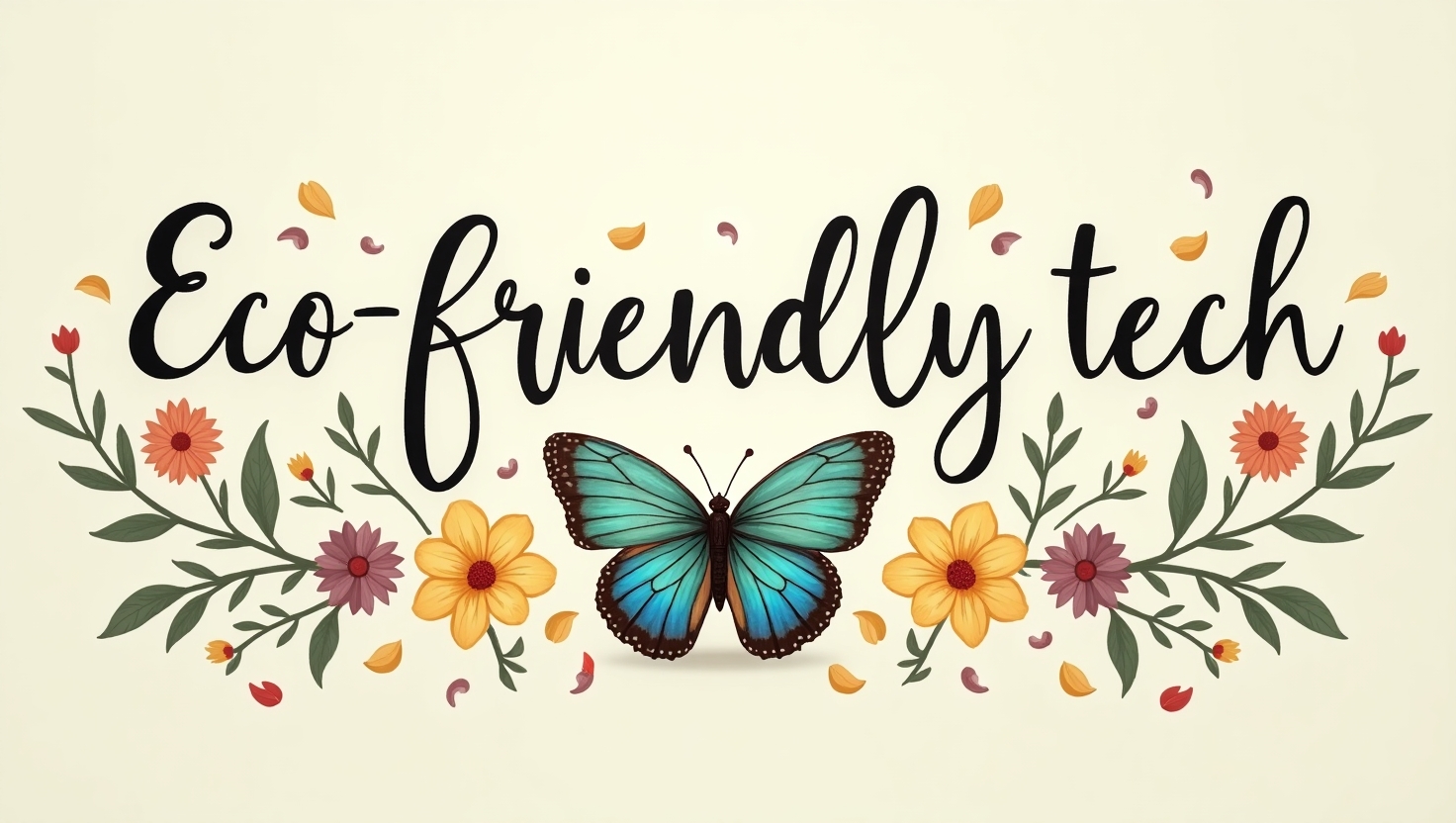In an era where environmental concerns dominate global discussions, technology is playing a crucial role in driving sustainability. The year 2025 marks a significant turning point as eco-friendly tech innovations lead the way toward a cleaner, greener, and more responsible planet. From renewable energy solutions and smart waste management to carbon-neutral gadgets, these advancements are changing how industries and individuals interact with the environment.
This article explores the top eco-friendly technology innovations of 2025 and how they are transforming lives while protecting the Earth for future generations.

1. Solar and Wind Energy Breakthroughs
One of the most impactful areas of eco-friendly innovation in 2025 is renewable energy. Thanks to major advancements, solar panels are now more efficient, affordable, and flexible than ever. Companies like SunTech Ultra have introduced solar film sheets that can be rolled out on rooftops, windows, and even electric cars.
Meanwhile, wind energy is being revolutionized with vertical axis wind turbines, which are compact, quieter, and more suitable for urban environments. These turbines can now be integrated into buildings, powering homes and offices without consuming large plots of land.
Together, these developments are helping cities reduce dependency on fossil fuels and move toward clean, decentralized energy systems.
2. Electric Vehicles and Green Transportation
Electric vehicles (EVs) continue to dominate the transportation sector in 2025. Innovations such as solid-state batteries are delivering longer ranges, faster charging times, and increased safety. Leading automakers like Tesla, Rivian, and Hyundai are now producing EVs with zero-emission footprints from production to on-road use.
Public transportation has also gone green, with electric buses, hydrogen-powered trains, and bike-sharing systems becoming the norm in smart cities. Additionally, solar-powered EV charging stations have become widespread, further lowering carbon emissions associated with transportation.
These shifts are not only reducing air pollution but also encouraging more people to adopt sustainable travel habits.
3. Smart Homes and Energy Efficiency
Eco-friendly smart homes have taken center stage in 2025. Smart thermostats, such as the Ecobee Climate Pro, now use AI to optimize heating and cooling based on weather, occupancy, and electricity rates. This helps homeowners significantly reduce energy consumption.
Other innovations include:
- Smart lighting systems that adjust brightness and timing based on natural daylight
- Energy-monitoring plugs that identify and minimize phantom power usage
- Rainwater harvesting systems connected to smart irrigation for eco-conscious gardening
These technologies not only cut down utility bills but also support a low-carbon lifestyle.
4. Biodegradable and Recyclable Electronics
The problem of e-waste is being addressed head-on in 2025 with the rise of biodegradable and recyclable gadgets. Tech companies are now using eco-materials such as bioplastics, bamboo, and recycled metals in smartphones, laptops, and accessories.
Brands like Fairphone and Framework have introduced modular designs, allowing users to repair or upgrade parts instead of discarding entire devices. This shift in design philosophy is extending the lifespan of electronics and minimizing landfill waste.
Even large corporations like Apple and Samsung are now committed to producing carbon-neutral devices and have invested in closed-loop recycling systems.

5. Green Cloud Computing and Data Centers
With the explosion of digital data, data centers have become one of the largest energy consumers. In 2025, many companies are turning to green cloud computing. Tech giants like Google, Amazon, and Microsoft have built AI-powered, carbon-neutral data centers that operate using 100% renewable energy.
Advanced cooling systems, like liquid immersion cooling, have drastically reduced electricity usage, while smart software monitors optimize server loads to avoid energy waste. These changes are making cloud computing more sustainable, without compromising performance or security.
6. Sustainable Packaging Solutions
Eco-tech innovation isn’t limited to energy and electronics. The packaging industry has undergone a major green transformation. Biodegradable packaging made from seaweed, mushroom roots (mycelium), and cornstarch is replacing traditional plastic.
AI-driven design tools now help companies create zero-waste packaging by minimizing material use and improving recyclability. Big brands such as Unilever, Nestlé, and Amazon have pledged to go fully plastic-free in their packaging lines by 2030, and many are already on track thanks to 2025’s tech upgrades.
7. AI and IoT in Environmental Monitoring
Artificial Intelligence and the Internet of Things (IoT) are now central tools in managing the environment. In 2025, smart sensors are deployed in rivers, forests, and airspaces to detect pollution, monitor biodiversity, and prevent wildfires.
These devices collect real-time data, which is analyzed using AI algorithms to create predictive models for climate events and conservation efforts. Governments, NGOs, and researchers rely on this data to make informed decisions on protecting ecosystems.
IoT-based smart waste bins are also in use across cities, helping manage trash collection more efficiently and reduce overflowing waste.
8. Eco-Conscious Consumer Tech
Consumers are becoming more environmentally aware, and tech companies are responding. In 2025, eco-conscious gadgets like solar-powered smartwatches, compostable phone cases, and energy-saving appliances are widely available.
Certification systems like Energy Star, EPEAT, and Cradle to Cradle help consumers identify green tech products easily. Manufacturers now highlight lifecycle impact, carbon footprints, and recyclability in their product descriptions.
This shift empowers users to make more sustainable choices without sacrificing functionality or aesthetics.

Conclusion: A Greener Tech Future is Here
The eco-friendly tech innovations of 2025 are proof that sustainability and technology can go hand in hand. From the way we power our homes to how we travel and consume digital services, green technology is helping us reduce our environmental footprint while improving the quality of life.
As governments, businesses, and individuals embrace these innovations, we move closer to a future where technological progress no longer comes at the cost of the planet—but instead works to preserve it.



